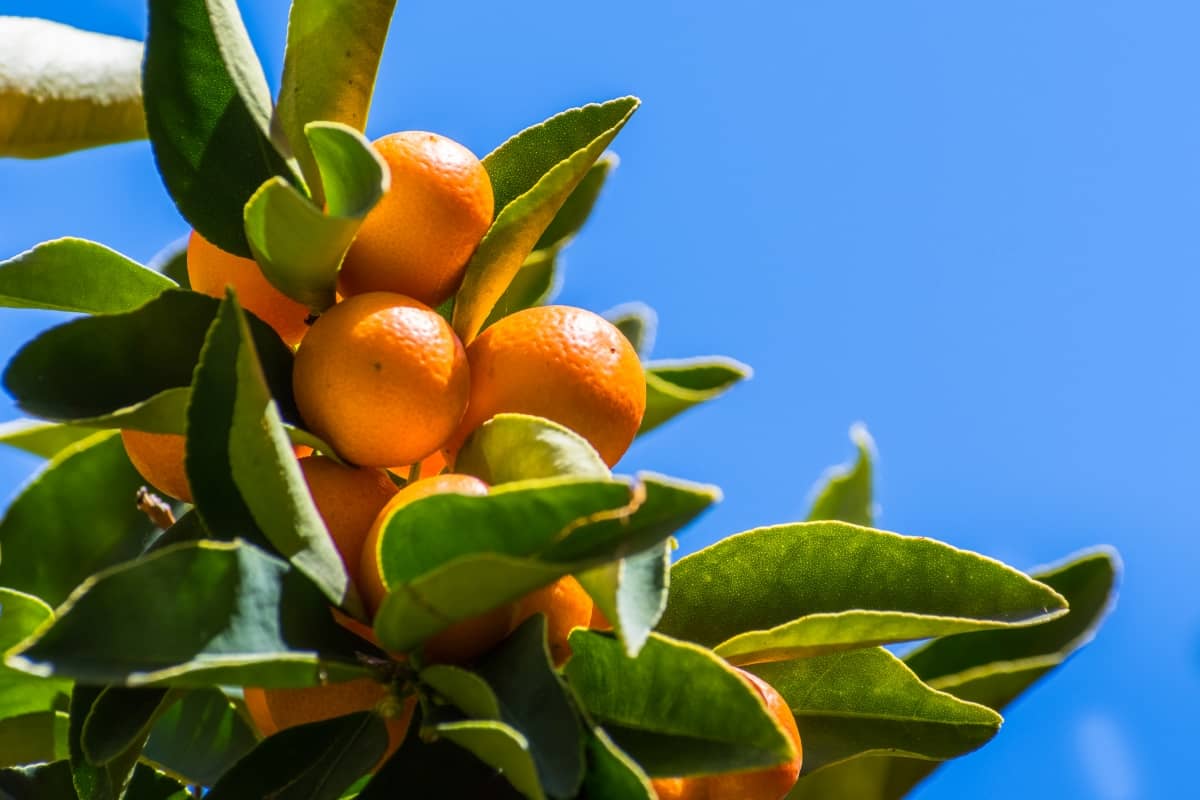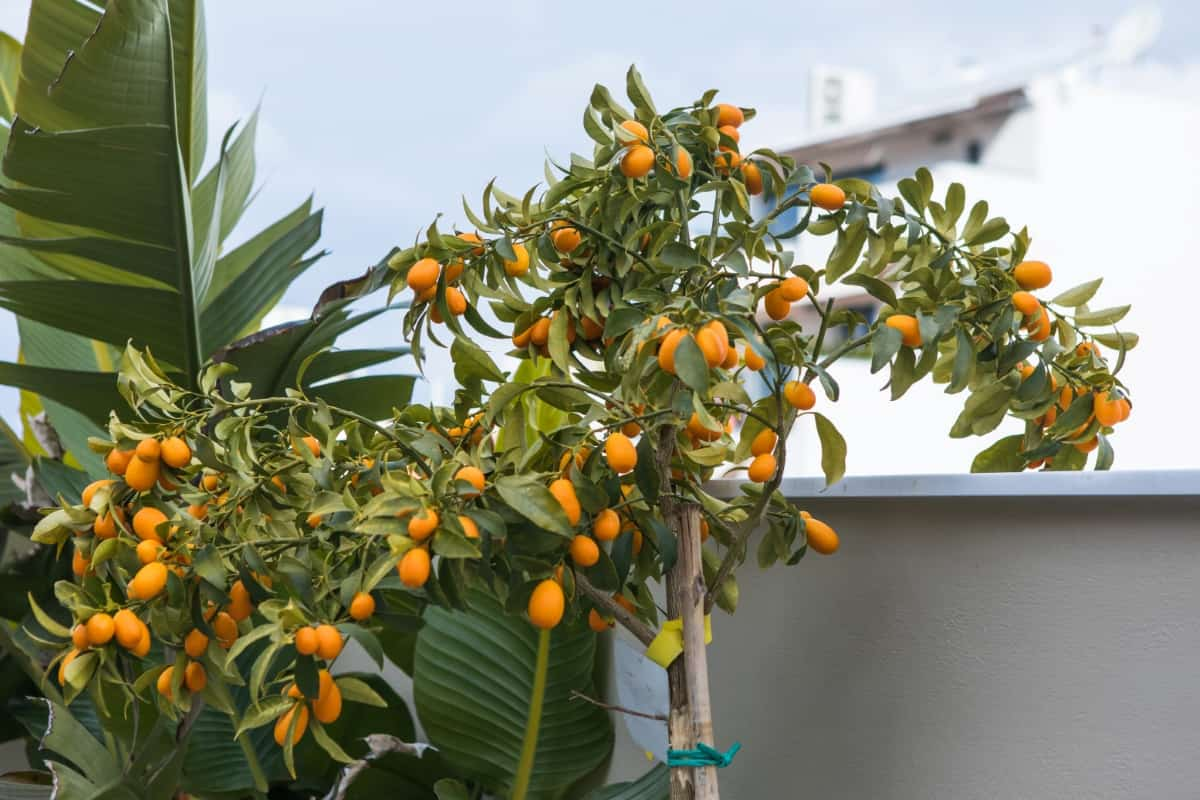Kumquat trees are known for their beautiful, small, and citrusy fruits. However, if you have a kumquat tree, you may encounter issues with the tree’s health and fruit production. One of the most common problems experienced by kumquat tree owners is the death of the tree. In this document, we will explore some causes of dying kumquat trees and provide tips on fixing them.

9 Causes of Dying Kumquat Trees
Why is My Kumquat Tree Dying in Summer Heat, and How Can I Save It?
- Your kumquat tree is simply struggling due to the extreme heat. However, you can help the tree by providing shade during the hottest days and ensuring it has sufficient water. Kumquat trees require regular watering, especially during periods of high heat.
- Pest infestations can also cause kumquat tree decline during the summer. Pests that can plague kumquat trees include spider mites, aphids, and scale insects. To prevent pest infestations, use natural pest control methods like neem oil or insecticidal soap.
- Your kumquat tree is simply struggling due to the extreme heat. In this case, there may not be much you can do other than wait for cooler weather. However, you can help the tree by providing shade during the hottest days and ensuring it has sufficient water.
Preventing Kumquat Tree Death from Fungal Infections: Effective Remedies and Prevention Tips
Fungal infections can have a severe impact on Kumquat Trees. Some fungal infections that can affect Kumquat Trees include the Citrus Scab, Phytophthora Root Rot, and Alternaria Brown Spot. These fungal infections can lead to leaf drop, fruit loss, and even tree death if left untreated.
The use of fungicides can help prevent these infections from occurring and spreading. Some fungicides that can be used include copper-based fungicides, neem oil-based fungicides, and sulfur-based fungicides. It is essential to apply these fungicides according to the manufacturer’s instructions and at the recommended times of the year.
Identifying Nutrient Deficiencies in Kumquat Trees and Remedies to Revive Them
- Nitrogen deficiency: Trees will exhibit pale green or yellow leaves. To solve this, apply nitrogen-based fertilizers to the soil or use organic compost.
- Phosphorus deficiency: Kumquat trees show up as purple or reddish leaves. By applying phosphorus-rich fertilizers like bat guano, the fish meal can help to solve this deficiency.
- Potassium deficiency: Yellow or brownish leaves and weak branches. To solve this deficiency, apply potassium-rich fertilizers like wood ash, greensand, and granite dust to the soil.
- Iron deficiency: Kumquat trees are characterized by yellowing leaves with green veins. Apply iron chelates or iron sulfate to the soil to solve this deficiency.
- Zinc deficiency: Kumquat trees are small leaves, stunted growth, and yellowing between veins. Apply zinc sulfate or zinc chelates to the soil.
How to Protect Kumquat Trees from Pests and Diseases to Prevent Decline and Death
Protecting Kumquat Trees Death from Pests
- Citrus leafminer: This tiny insect can cause significant damage to the leaves and, in severe cases, can even cause defoliation. Use neem oil or else insecticidal soap to treat an infestation.
- Citrus psyllid: This insect feeds on the leaves and stems of the tree and can transmit a deadly disease called citrus greening. Apply insecticidal soaps or neem oil to treat an infestation.
Protecting Kumquat Trees Death from Diseases
- Citrus canker: It causes lesions on the tree’s leaves, fruit, and twigs. Keep your tree well-fed and watered, and avoid over-crowding or planting your tree in a poorly-drained area. It is important to carefully remove and dispose of infected plant material to prevent the disease from spreading.
- Root rot: It can cause the roots of the tree to decay. If you suspect your tree has root rot, you may need to remove and replace the affected soil to prevent the disease from spreading.
Overwatering Issues in Kumquat Trees: Signs, Symptoms, and Steps to Rescue a Dying Tree
Overwatering Symptoms and Issues In Kumquat Trees
- Yellowing leaves: Overwatering will cause the leaves of the kumquat tree to turn yellow and fall off.
- Wilting leaves: The leaves of the kumquat tree may start to wilt and droop due to overwatering.
- Fungus growth: Overwatering can create a damp environment around the roots of the kumquat tree, which can lead to the growth of fungus.
- Slow growth: Overwatering can restrict the growth of the kumquat tree by depriving it of oxygen.
Steps to Rescue a Dying Tree
- Adjust watering: Reduce the watering frequency and only water the Kumquat tree when the top inch of the soil is dry.
- Improve drainage: Improve the soil drainage by adding organic matter or using a well-draining potting mix.
- Remove affected roots: If root rot has already set in, remove the affected roots and repot the tree in fresh soil.
- Prune the tree: Prune the tree to remove any dead or diseased branches, which can help the tree to recover faster.
In case you missed it: Ultimate Guide to Growing Kumquat: How to Plant, Prune, Care, and Harvest

Underwatering Issues in Kumquat Trees: Signs, Symptoms, and Steps to Rescue a Dying Tree
- Leaf dropping: Underwatered Kumquat trees tend to lose their leaves. The leaves start wilting and turn yellow before falling off. This is a sign that the tree is not getting enough water.
- Stuntedgrowth: Kumquat trees not watered enough will have stunted growth. The tree will not produce as many fruits or grow as tall as it should.
- Dry soil: Underwatering will cause the soil around the Kumquat tree to dry out. The soil will be hard and difficult to penetrate with a finger. The tree’s roots will not be able to absorb water from the dry soil.
Steps to Rescue a Dying Tree
- Water the tree: Make sure the water reaches the tree’s roots. You can water the tree with a hose or a watering can.
- Mulch the soil: Mulching around the Kumquat tree’s base will help to retain moisture. The mulch protects the tree’s roots from the sun’s heat.
- Prune the tree: Pruning the Kumquat tree will help it to conserve water. Remove dead or damaged branches to reduce the tree’s water needs.
Kumquat Tree Winter Damage/Dying: Protecting Trees from Frost and Cold Temperatures
Kumquat trees are susceptible to freezing temperatures, especially when they are young. When the temperature goes below 10°C, the tree can suffer from frost damage, leading to its death. Covering the Kumquat tree with a blanket or burlap during cold snaps is recommended to prevent this. During the winter months, the tree may not get enough soil nutrients.
To ensure that the tree gets the nutrients it needs, it is recommended to fertilize it with a balanced fertilizer once every two months. Kumquat trees can be susceptible to pests such as aphids, spider mites, and scale insects. These pests can weaken the Kumquat tree and make it more susceptible to disease. To prevent pests from infesting the tree, keeping the tree clean and removing any dead or diseased branches is recommended.
Improper Pruning May Cause Kumquat Tree Death: Pruning Methods for Healthy Growth
Here are some causes of improper pruning in Kumquat Trees and how to save them.
- Pruning too much of the tree at once can weaken the Kumquat tree and cause it to produce fewer fruits. To save an over-pruned Kumquat Tree, it is essential to reduce the amount of pruning and allow the tree to grow naturally.
- Using the wrong pruning technique can cause damage to the tree’s bark and branches. To prevent this, use sharp and clean pruning tools and remove only dead or damaged branches.
- Pruning at the wrong time of the year can cause significant damage to the tree. Kumquat Trees should be pruned during the winter months when they are dormant.
Reviving a Stressed Kumquat Tree: Rehabilitation Methods for Overall Recovery
- Watering: To help your tree recover, ensure it gets enough water. The water needed will vary depending on the climate and soil conditions.
- Fertilization: Lack of nutrients is another common cause of stress in kumquat trees. To help your tree recover, fertilize it with a balanced nitrogen, phosphorus, and potassium fertilizer. You can also apply organic matter to the soil to help improve its fertility.
- Pruning: If your kumquat tree is stressed, it may be beneficial to prune it to remove any dead or damaged branches. This will help the tree focus its energy on healthy growth.
- Pest and disease control: Stressed trees are more susceptible to pests and diseases, so look for any signs of infestation or infection. Treat any problems promptly to prevent further stress on the tree.
In case you missed it: Frequently Asked Questions About Growing Kumquat from Seed to Harvest

Conclusion
In conclusion, various factors can cause a dying kumquat tree, and identifying the cause is essential to take the appropriate steps to fix it. A kumquat tree can be nursed back to health and thrive again by addressing the underlying issue.
- Feed Your Flock for Less: Top 10 Tips to Save on Chicken Feed
- Ultimate Guide to Ossabaw Island Hog: Breeding, Raising, Diet, and Care
- Hatching Answers: The Top 10 Reasons Your Chickens Aren’t Laying Eggs
- Eggs and Economics: Breaking Down the Cost of Raising Backyard Chickens
- Defend Your Greens: Proven Methods to Keep Iguanas Out of Your Garden
- Ultimate Guide to Cinnamon Queen Chicken: A Comprehensive Guide for Beginners
- Ultimate Guide to California Tan Chicken: Breeding, Raising, Diet, Egg-Production and Care
- Ultimate Guide to Marsh Daisy Chicken: Breeding, Raising, Diet, and Care
- 10 Types of Chicken Farming Businesses You Can Start for Profits